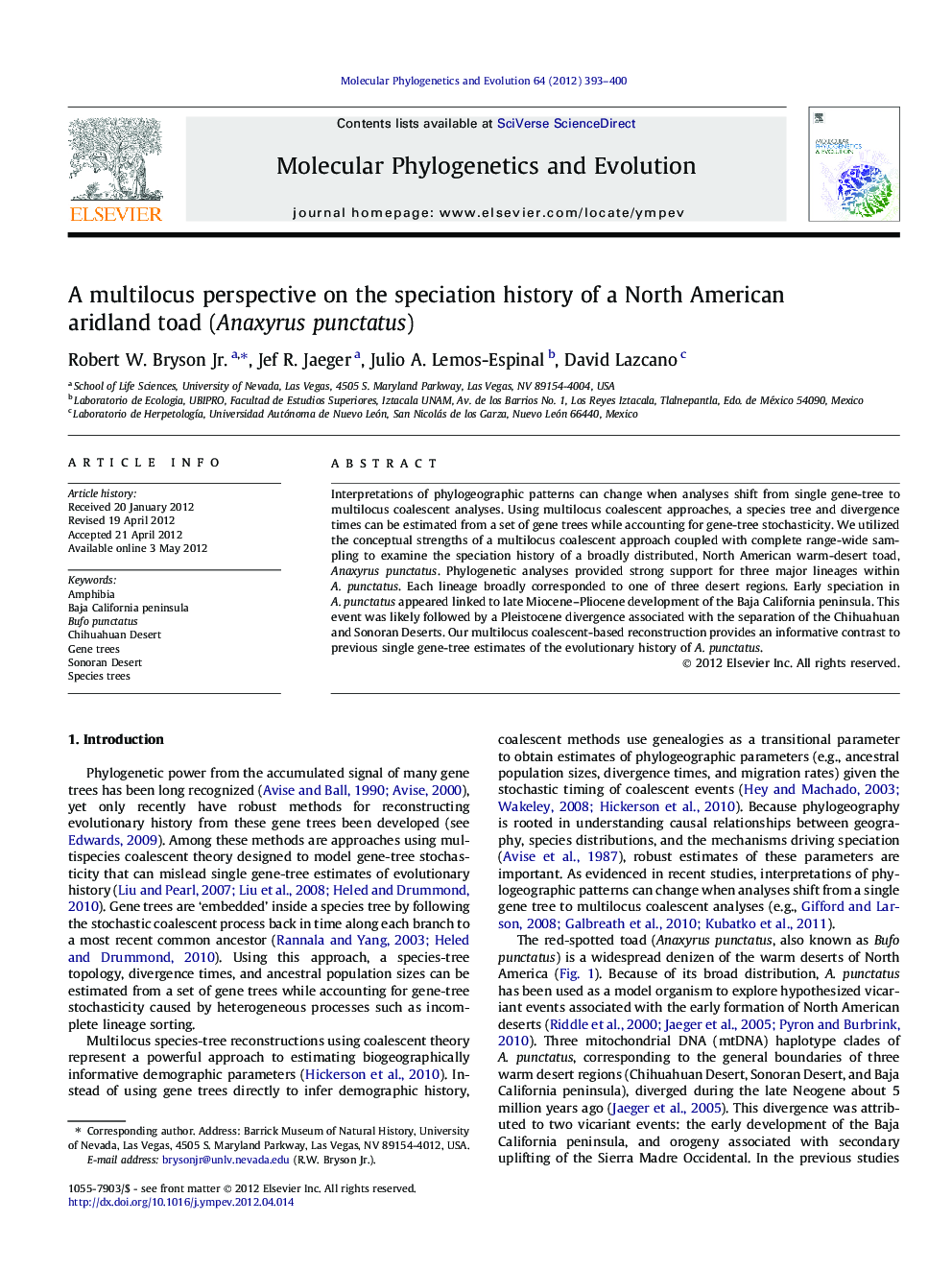| Article ID | Journal | Published Year | Pages | File Type |
|---|---|---|---|---|
| 2834092 | Molecular Phylogenetics and Evolution | 2012 | 8 Pages |
Interpretations of phylogeographic patterns can change when analyses shift from single gene-tree to multilocus coalescent analyses. Using multilocus coalescent approaches, a species tree and divergence times can be estimated from a set of gene trees while accounting for gene-tree stochasticity. We utilized the conceptual strengths of a multilocus coalescent approach coupled with complete range-wide sampling to examine the speciation history of a broadly distributed, North American warm-desert toad, Anaxyrus punctatus. Phylogenetic analyses provided strong support for three major lineages within A. punctatus. Each lineage broadly corresponded to one of three desert regions. Early speciation in A. punctatus appeared linked to late Miocene–Pliocene development of the Baja California peninsula. This event was likely followed by a Pleistocene divergence associated with the separation of the Chihuahuan and Sonoran Deserts. Our multilocus coalescent-based reconstruction provides an informative contrast to previous single gene-tree estimates of the evolutionary history of A. punctatus.
Graphical abstractFigure optionsDownload full-size imageDownload as PowerPoint slideHighlights► Multilocus coalescent analyses used to reconstruct speciation history of A. punctatus. ► Results provided strong support for three major warm desert lineages. ► Early speciation appeared linked to Miocene–Pliocene development of the Baja California peninsula. ► Later diversification caused by Pleistocene division of Chihuahuan and Sonoran Deserts. ► Anaxyrus punctatus probably represents a species complex.
